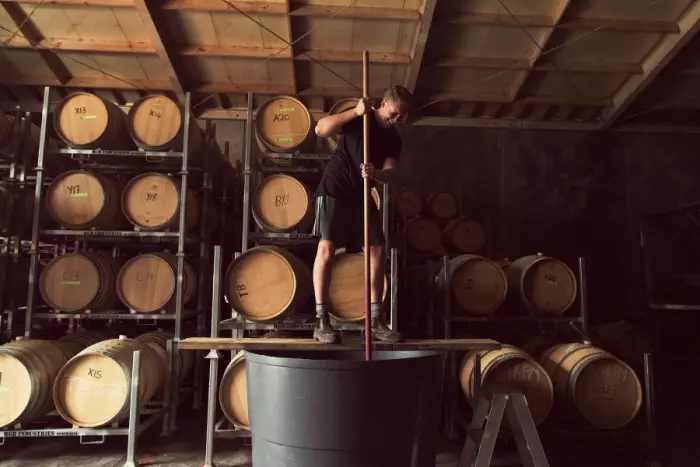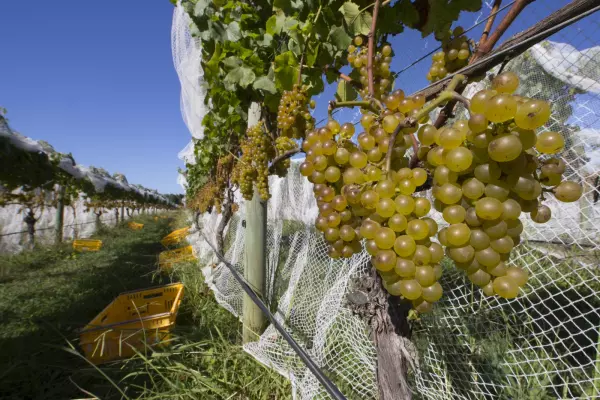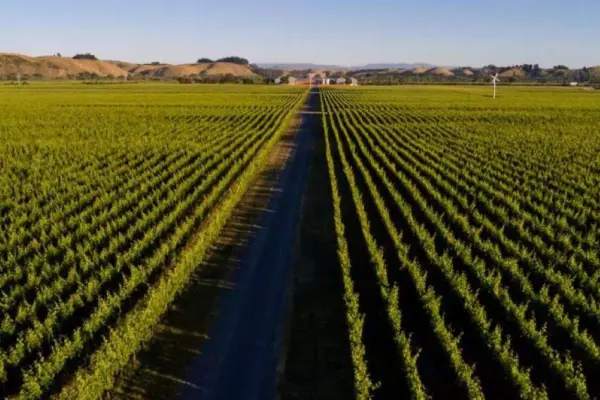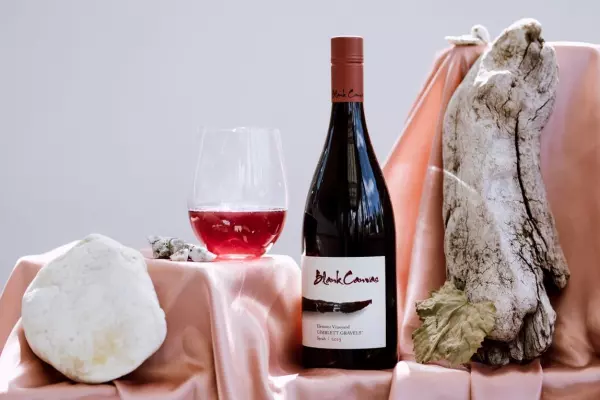The Lord giveth and the Lord taketh away. After a trio of mostly splendid vintages, 2022 is proving to be something of a challenge.
It is important to remember that weather conditions can vary considerably even within a single region. When rain clouds gather on the horizon, winemakers may have to decide whether they should pick grapes that are underripe or hold off and risk dilution and rot in pursuit of extra ripeness.
Adjacent vineyards planted with the same grape variety can have very different results if one operator chooses to pick before the rain while the other decides to pick later. “Given the choice, I would pick early,” one told me. “I can make good wine from slightly green fruit but it is more difficult to make decent wine if the grapes are tainted by rot.”
One Hawke’s Bay winemaker told me he travels 180km to pick grape samples from a handful of vineyards.
This year, labour shortages – exacerbated by experienced pickers being laid low by covid – often left vineyard operators with little choice about when to harvest. I was told many stories about the poor quality and high cost of grape pickers. For many of them, this was their first-ever vintage. It is hard work. I have picked grapes only once, and suffered from back pain and bee stings. It didn’t surprise me when one winemaker complained about booking 20 pickers but only three people showed up.
Auckland
Kumeu River winemaker Michael Brajkovich, MW, managed to dodge the rain and had his grapes all tucked up in tanks by 15 March, which is very early. “We had no rain during harvest and the wines are all looking good. For us the 2022 vintage is right up there with 2021.”
Brajkovich admits Kumeu River fared better than most wineries: quantity was about normal, although labour costs were higher this year.
Gisborne
Paul Tietjen, co-owner of TW Wines, told me that everyone in the region scrambled to get the grapes off before the rain arrived. “If you get caught by rain, the flavours are diluted and it takes 7-10 days to get back to normal. Expect white wines to be cooler and leaner this year, although I am pretty happy with the flavours. Reds were a struggle, with most being made into rosé.”
Not since 2003 has Tietjen seen a season like this one. The choice of picking date was the most crucial decision, after a La Niña influence brought cooler, wetter and occasionally more humid conditions. Chardonnay is the hero this year. Expect variation.
Hawke’s Bay
Tony Bish, owner of Tony Bish Wines, declared the Hawke’s Bay vintage a “rough one”, thanks to unkind weather.
A hot, humid February put rot pressure on the early varieties before the southerlies moved in and gave reasonably good weather for two and a half weeks until the rain returned. Bish is a chardonnay specialist, which helped him to dodge the rain clouds this year. “I picked all my chardonnay in seven days and spent a fortune on labour for hand-picking and sorting grapes to remove any rot.”
Matt Kirby, winemaker at Clearview Estate, was more bullish about the vintage. “I feel strongly positive about it. It did offer challenges such as warm, wet and humid conditions, with 100mm of rain in February, but we were helped by our coastal position, which brings cooler weather offering later ripening conditions. We had three weeks of good ripening weather, which gave us good flavours. It will be remembered as a good red year, though not as good as 2019, 2020 and 2021.”
There is likely to be some variation, depending on where you were in the ripening spectrum when the rain hit.
Wairarapa
Pip Goodwin, CEO of Palliser Estate winery, said the record rainfall in February “was not our friend. It was our shortest-ever vintage, and it became a real team effort to harvest the grapes in a hurry. We had our administration staff, friends and shareholders all furiously picking grapes.
“The 2022 vintage will be remembered for all sorts of reasons, although it wasn’t all gloom and doom: quantity was up on last year and we have made some very nice wines, including a lovely chardonnay.”
Marlborough
When I spoke to John Forrest, co-owner of Forrest Estate, he was looking very relaxed. The last of his grapes had been picked a week before, on 5 April.
“It was a challenging vintage but the wines look better than I thought. After veraison [the point when red grapes gain their colour], we had two cyclones and warm, wet conditions before a month of good ripening weather and then rain.
“Everyone’s pretty happy. Crop sizes vary from normal to 20% above normal. We certainly need the extra volume to make up for the 35% shortfall last year. Chardonnay and riesling were my two vintage heroes. Pinot noir was the most challenging variety this year.”
Nelson
Nelson enjoyed remarkably similar vintage conditions to Marlborough but with average quantity, according to James Healy from Abel Wines. February was extremely hot and humid but was followed by perfect weather for five weeks. Early-ripening varieties fared well, although pinot noir was a challenge.
Central Otago
Unlike the rest of the country, Central Otago enjoys hotter, drier weather under a La Niña influence. The region has experienced perfect conditions during the ripening season. With only about 20% of the grapes still to be picked, it is safe to say that 2022 will be one of Central Otago’s better vintages, despite the shortage of vineyard labour. Quantity also looks to be slightly above average.
Bob’s Top Picks for weekend sipping and cellaring
Investment Wine

2018 Hans Herzog Mistral, Marlborough, $64
A blend of 50% viognier, 40% marsanne and 10% roussanne. A very textural white wine with good weight and mouthfeel. “Sunny” flavours including peach, apricot and vanilla. Very appealing wine that is straight out of the Rhône.
Weekend Wine
Top White

2021 Clark Estate Blackbirch Pinot Gris, Marlborough, $23
Plump, flavoursome Awatere Valley pinot gris with classic honeysuckle, pear and mango flavours supported by gentle acidity and fine, peppery tannins. Pristine wine in an off/dry style.
Top Red

2020 Escarpment Noir Pinot Noir, Martinborough, $35
Made from organic grapes with minimal intervention. Unfiltered, with low sulphur additions produce a fruit-forward pinot noir with black cherry, plum, spice, dried herb and wood smoke flavours. Accessible now.
Read more from Bob @therealreview














